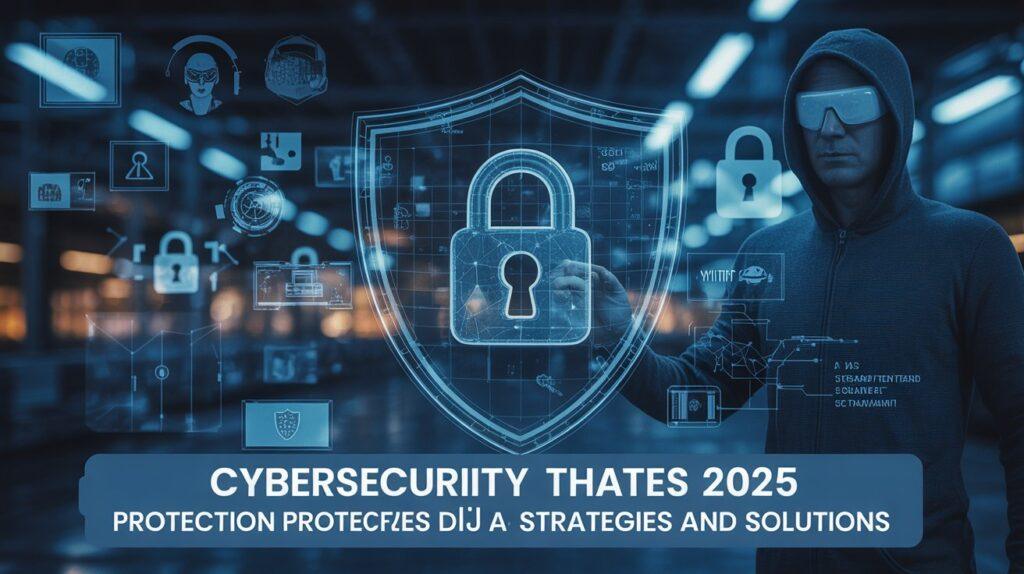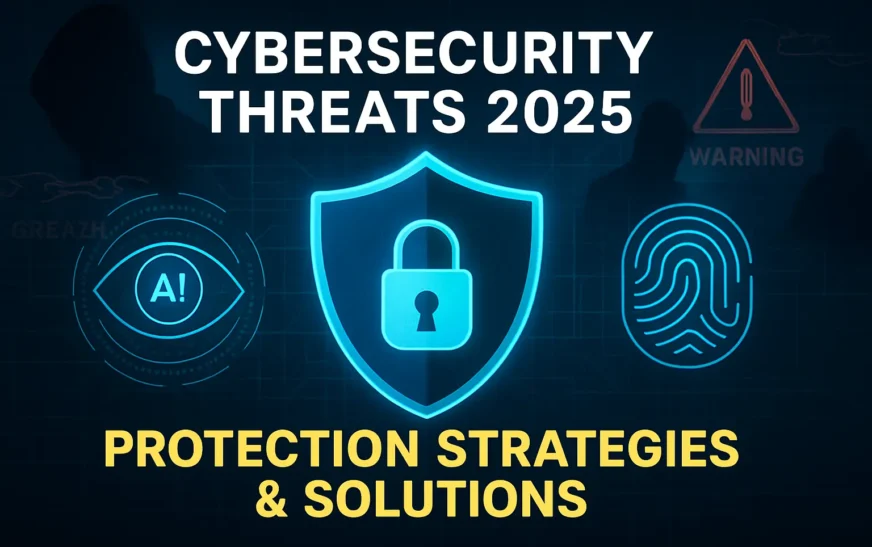In 2025, cyberattacks have grown more sophisticated, frequent, and costly than ever before. As organizations invest an average of $4.45 million to remediate a single data breach, stakeholders must adopt layered defenses and proactive strategies. This article provides a detailed roadmap—spanning the latest threat landscape, AI-powered solutions, small-business checklists, remote-work protocols, incident response planning, and regulatory compliance—to safeguard businesses and individuals against evolving cyber risks.
Executive Summary
· Global cybercrime damage is projected to reach $10.5 trillion by year-end 2025.
· Ransomware attacks have surged 120 percent compared with 2024, with average payouts of $550,000.
· AI-driven threat detection tools reduce incident response times by up to 60 percent.
· Small businesses account for 43 percent of breaches—underscoring the need for tailored security measures.
· Regulatory fines under GDPR and CCPA have exceeded $2 billion globally in 2025.
Key Recommendations
- Deploy zero-trust architectures and next-gen firewalls.
- Implement continuous AI-powered monitoring and behavioral analytics.
- Enforce multi-factor authentication (MFA) and robust endpoint protection.
- Train employees with phishing-simulation platforms and tabletop exercises.
- Develop and test incident response playbooks aligned to NIST CSF and ISO 27001.
1. Latest Cyber Threats in 2025
1.1 Advanced Ransomware Campaigns
- Double-extortion tactics: Attackers exfiltrate data before encryption, threatening to leak unless paid.
- Ransomware-as-a-Service (RaaS): Low-skill actors can launch high-impact attacks using subscription-based toolkits.
1.2 Supply-Chain Attacks
- Breaches of trusted third-party vendors remain a top vector. The average time to detect a supply-chain breach is 250 days.
1.3 AI-Driven Phishing and Deepfakes
- Automated spear-phishing uses large-language models to craft personalized emails.
- Voice cloning and deepfake videos impersonate executives to trick employees into fund transfers.
1.4 IoT and OT Exploits
- Attackers target Internet-connected devices—from smart cameras to industrial control systems—often leveraging default credentials and unpatched firmware.
1.5 Business Email Compromise (BEC)
- Sophisticated BEC schemes use AI-generated counterparty communication and domain spoofing to avoid detection.
2. AI-Powered Security Tools
| Tool Category | Leading Solutions | Key Features | Average Cost (Annual) |
|---|---|---|---|
| Endpoint Protection Platforms | CrowdStrike Falcon, SentinelOne | Behavioral analytics, automated remediation | $50-$80 per endpoint |
| SIEM & UEBA | Splunk, Exabeam, Sumo Logic | Correlation rules, anomaly detection, threat hunts | $200k-$400k |
| EDR & XDR | Microsoft Defender XDR, Palo Alto Cortex XDR | Cross-vector detection, automated playbooks | $100k-$250k |
| Cloud Workload Security | Prisma Cloud, Wiz, Aqua Security | API discovery, misconfiguration remediation | $70k-$150k |
| Phishing Simulation & Training | KnowBe4, Cofense, Proofpoint Security Awareness | Simulated attacks, LMS integration | $15k-$40k |
Implementation Guide
- Conduct a risk assessment to map critical assets.
- Pilot AI tools on high-value endpoints.
- Integrate with SOAR platforms for automated response.
- Tune detection rules quarterly based on threat intelligence feeds.
3. Small Business Security Checklist
- Network Security Tools
- Next-gen firewall with intrusion prevention (IPS).
- Managed detection and response (MDR) service.
- Endpoint Hardening
- Full disk encryption and EDR agents on all devices.
- Restrict admin privileges and enforce patch management.
- Access Controls
- MFA on all remote and privileged accounts.
- Least-privilege IAM policies.
- Data Breach Prevention
- DLP solutions for sensitive data exfiltration protection.
- Regular backups stored offline or in immutable storage.
- Employee Training
- Quarterly phishing drills and biannual tabletop exercises.
- Cybersecurity awareness modules for new hires.
- Incident Response Planning
- Documented playbook covering detection to recovery.
- Retainer arrangement with legal counsel and forensic vendor.
- Compliance and Audit
- Annual security audits aligned to ISO 27001 or SOC 2.
- Data privacy reviews for GDPR and CCPA requirements.
4. Remote Work Security Protocols
- Secure VPN & ZTNA: Implement zero-trust network access to authenticate users before granting resource access.
- Endpoint Compliance Agents: Enforce patch level, antivirus status, and device encryption before network join.
- Secure Collaboration Platforms: Use enterprise-grade tools with end-to-end encryption (e.g., Microsoft Teams E5, Zoom for Government).
- BYOD Policies: Containerize corporate data via mobile application management (MAM).
- Continuous Monitoring: Leverage cloud-based SIEM and UEBA to detect anomalous remote login patterns.
5. Incident Response Planning
| Phase | Objectives | Key Activities |
|---|---|---|
| Preparation | Build capabilities | IR team formation, playbook development, tool readiness |
| Detection & Analysis | Identify and understand incidents | Real-time alerts, forensic triage, root cause analysis |
| Containment | Limit scope and impact | Network segmentation, session termination |
| Eradication | Remove threat artifacts | Patching, credential resets, malware removal |
| Recovery | Restore systems to business operations | System rebuild, data restoration, validation testing |
| Lessons Learned | Improve future responses | After-action reviews, playbook updates, training sessions |
Cost Analysis
- Average incident response retainer: $50,000/year
- Forensic investigation rates: $300–$500/hour
- Business continuity solutions: $20,000–$100,000
6. Compliance Requirements (GDPR, CCPA)
| Regulation | Scope | Key Obligations | Penalty for Non-Compliance |
|---|---|---|---|
| GDPR | EU data subjects | Data mapping, DPIAs, breach notification (<72 hours), privacy by design | Up to €20 million or 4% global revenue |
| CCPA | California residents | Consumer rights requests, privacy notices, opt-out mechanisms | Up to $7,500 per violation |
| HIPAA | Healthcare PHI | Access controls, audit logs, breach notification | Up to $1.5 million per year |
| PCI DSS | Payment card data | Network segmentation, encryption, vulnerability management | Fines up to $100,000 per month |
Implementation Guide
- Appoint Data Protection Officer (GDPR).
- Conduct data mapping and register processing activities.
- Implement consent management and privacy dashboards.
- Develop breach notification workflows and train staff.
- Schedule annual compliance audits and update policies.
7. Comparison of Top Security Software
| Feature | CrowdStrike Falcon | Palo Alto Cortex XDR | Microsoft Defender XDR | Splunk SIEM | KnowBe4 Awareness |
|---|---|---|---|---|---|
| AI-Driven Detection | Yes | Yes | Yes | Limited | No |
| Automated Playbook Execution | Yes | Yes | Yes | No | No |
| Cloud Workload Protection | Basic | Advanced | Basic | No | No |
| Phishing Simulation | No | No | No | No | Yes |
| Integration with SOAR Platforms | Yes | Yes | Yes | Yes | No |
| Pricing Model | Per endpoint | Per endpoint | Per user/device | Volume-based | Per seat |
8. Implementation Roadmap

- Month 1–2: Risk assessment, procurement, and pilot deployments.
- Month 3–4: Full-scale rollout of AI-powered tools and network segmentation.
- Month 5–6: Employee training programs and phishing simulations.
- Month 7: Tabletop incident response exercise.
- Month 8–9: Compliance audit and remediation.
- Ongoing: Quarterly red-team assessments and policy updates.
9. FAQs
Q1: What are the top cybersecurity solutions for 2025?
Leading solutions include AI-driven EDR/XDR (CrowdStrike, SentinelOne), SIEM/UEBA (Splunk, Exabeam), and cloud workload protection (Prisma Cloud, Wiz).
Q2: How can small businesses prevent data breaches?
By deploying next-gen firewalls, MDR services, EDR agents, regular patching, MFA, DLP tools, and employee training.
Q3: Are AI-powered security tools worth the investment?
Yes. They reduce detection-to-response times by up to 60 percent and automate threat hunting at scale.
Q4: What should an incident response plan include?
Preparation, detection & analysis, containment, eradication, recovery, and lessons learned phases—with clear roles, workflows, and communication templates.
Q5: How do GDPR and CCPA differ?
GDPR applies to EU data subjects with stricter consent and DPIA requirements. CCPA focuses on California residents’ opt-out rights and provides statutory damages per violation.
Q6: What is ransomware protection best practice?
Maintain offline backups, implement immutable storage, enforce least privilege, patch proactively, and use EDR with rollback capabilities.
Q7: How can remote workers stay secure?
Use ZTNA, secure VPNs, endpoint compliance checks, containerized corporate apps, and continuous monitoring.
Q8: How often should security audits be conducted?
At least annually, with quarterly vulnerability scans and biannual penetration tests.
Q9: What’s the cost of ethical hacking services?
Ranges from $15,000 for basic pentests to $100,000+ for red-team engagements, depending on scope.
Q10: How do I choose a security audit service?
Evaluate based on industry certifications (CREST, OSCP), methodology transparency, experience in your sector, and sample reports.










